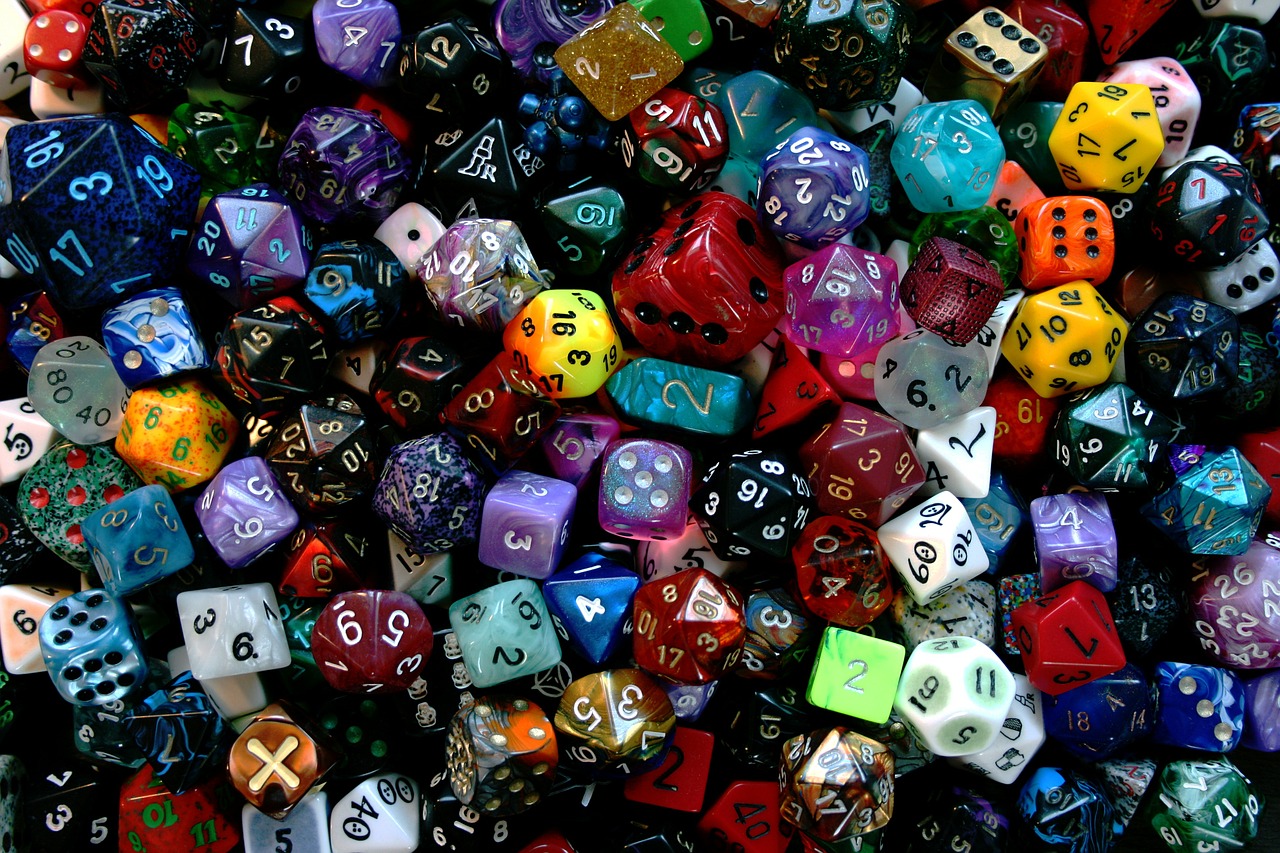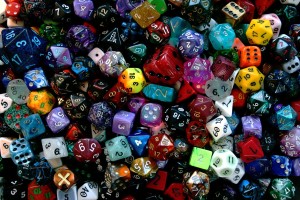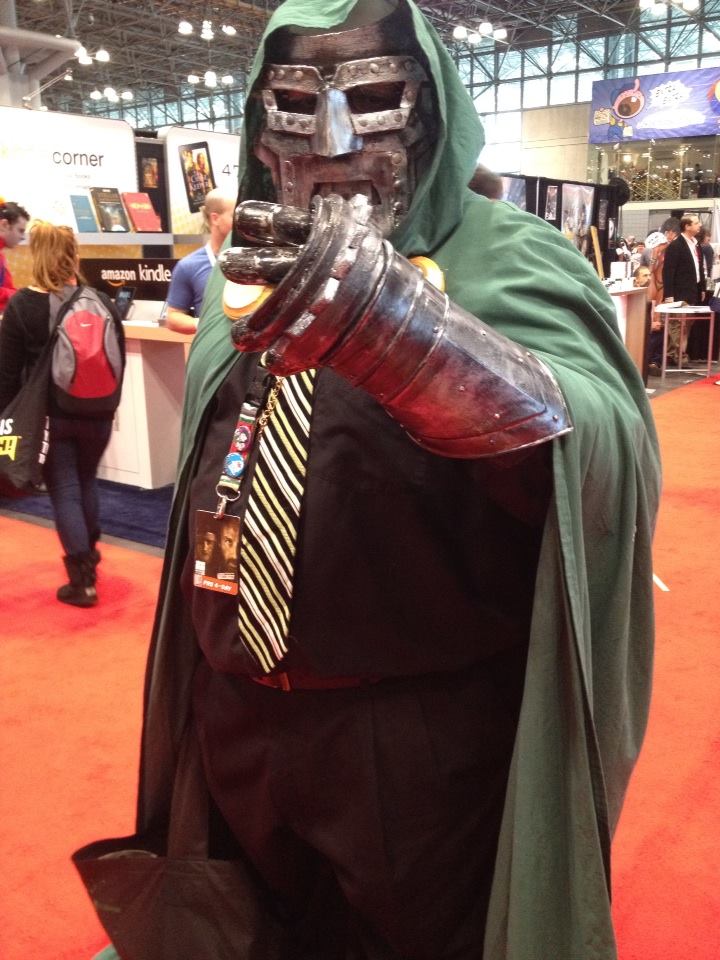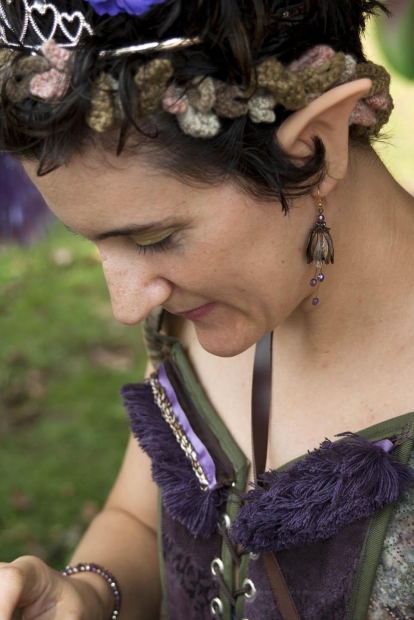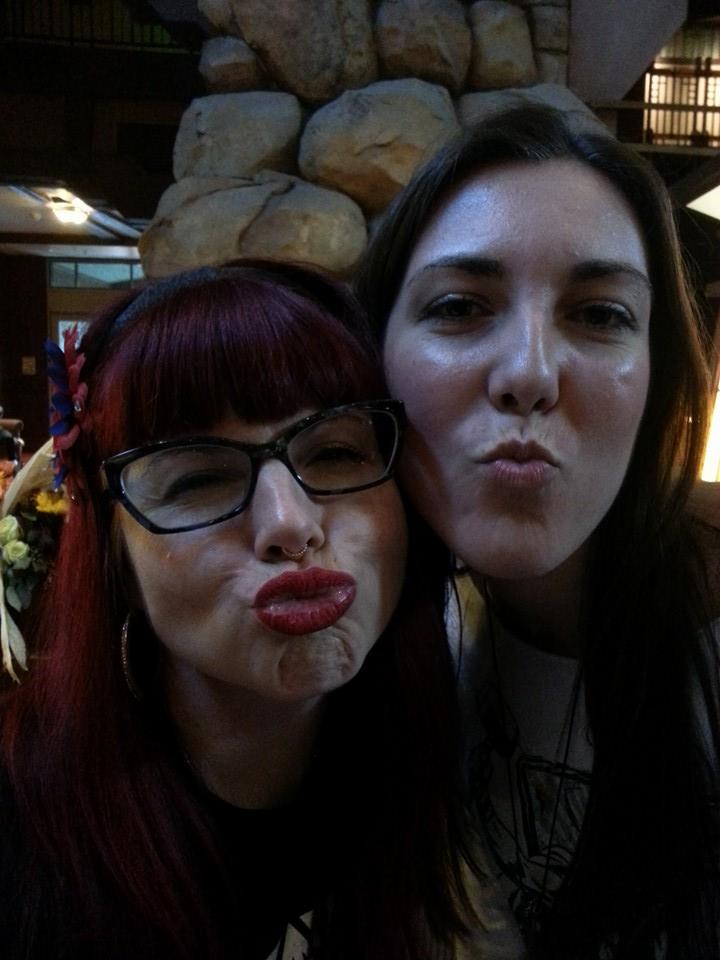They say that when life gives you lemons, you make lemonade, and when life gives you an adamantly wonderful set of friends, you make random convention stops. By some strange twist of fate, I’d never been to Dreamation or any other pure gaming convention. I’d only been to Anime conventions and when I saw the big massive board full of demo-game signups, I knew I had found something I had sought for many years: Nerdvana.
I believe I’ve earned the right to make that joke exactly once.
Oblivion LARP: The Strife of Perception, Part One
My first big event of the convention was part one of the Strife of Perception, by the Oblivion LARP. You may have read senior editor Tara Clapper’s review of part two, as well as our first article on this year’s Dreamation. I spent the evening as the pre-generated character “Mr(s). Clutch,” and I waded through technological monstrosities with a NERF revolver in one hand and a “lead pipe” in the other. When people were knocked out, I patched them up. When monsters needed a whupping, I was there to hit them. When doors needed to be Slagel Picked (cyber-punk, natch,) I picked them wide open. I referred to myself as a “Retrieval Expert,” who was unfortunately named Critical Stevens by a set of very strange parents. He only referred to himself as Steve in play though, because no one would dare admit that their actual name was Critical Stevens. With any luck, I’ll be able to bring him to the LARP proper some time later this year. These guys know how to run a LARP, and I’d suggest anyone who’s a fan of cyberpunk dystopian stories with a vaguely hopeful outlook via player super-heroics give them a shot. The GMs know their business, and the veteran players were extremely helpful. The rules seem simple and straightforward, and as I was informed: “Everything is done in units of 2, or other even numbers, to keep math easy and simple.”
Friday night ended solidly, and I found myself realizing: I was a writer and an editor, and going to an RPG convention. If I didn’t come back having played some serious tabletop, I’d be doing it wrong.
Greyhawk Reborn: The Liberation of Monmurg
I had no idea what I was walking into. No research, no planning, just a desire to play some 5e D&D and a big sign-up board that showed off a vast quantity of events related to something called “Greyhawk Reborn.” When it comes to D&D experience, I’ve been around the block a few times, I have seen the proverbial elephant, I have danced with the devil in the pale moon light, and made various Batman references in the process. But I know not the ancient secrets of Greyhawk. It was the first setting devised by Gary Gygax, and it was unfinished. Vast portions of the map could be described with the words “here there be dragons.” I always felt that it was the entire point: mysterious, untamed, Greyhawk was a land unknown to me. My first D&D game was an AD&D game at a summer camp when I was 14. My second was a 3.0 game my old buddy Alex ran when I was in middle school, but by the time I was a hardcore gamer, my fellow gamers were entranced by the glories of the Forgotten Realms.
So I decided to sign up for the coolest looking event on their list: The Liberation of Monmurg, a massive multi-player mega-game with multiple DMs for characters level 1 – 10. Sir Kinth had a mission for the assembled heroes: it was time to take back the city from the Scarlet Brotherhood. I was Marcus Silverstar, High Elven Wizard, accidental court barrister, and enemy to tyranny everywhere! I was also level one. The module included massive numbers of different missions for a variety of characters of different levels. The level 9 and 10 heroes were taking on the brunt of the enemy army as we smaller heroes took special missions on the side. Alongside the monk Krieger, the cleric Pam, and the archer Sterling, (Cue the theme song,) Marcus engaged on a subversive sabotage campaign against the Scarlet Brotherhood. They helped to eliminate the watch posts outside the city, took control of a ballista within to snipe enemy positions, held the ballista against orcish assaults, negotiated for assistance with the city watch to back the invasion, and successfully interrogated enemy secrets out of captives using a cup of tea and a smile.
Would I play in Greyhawk Reborn again? Hell yes. The encounters were interesting, the DM rolled with the punches and played with whatever crazy shenanigans I decided to improvise with, and it was pretty obvious that he and his team of fellow DMs were committed to making sure everyone had a good time.
By the time the battle was over, Marcus Silverstar was level 2. And he will return again the next time I’m in range of a Greyhawk Reborn event.
The Thirteenth Age: Shadowport Shuffle
The story always starts the same way; a group of heroes come together to save the world. (Or they come together to destroy it, depending on the players.) Sometimes it’s in a tavern, sometimes they’ve known each other for years, and sometimes they just so happened to meet up as part of a convoluted series of events orchestrated by a clever DM. But one thing is always certain: they’ve developed a particular set of skills over the years, skills that make them a nightmare for whatever enemies they’re up against.
But how did you develop your set of skills? Nobody who becomes a renowned fighter decides that they wanted to put points into Athletics so they could be a professional athlete. Or what if they did? What happens when a champion pole-vaulter decides to become a master warrior? Thirteenth Age is what happens when the lead designer of D&D 3.0, and the lead designer of D&D 4.0 come together to make a game, and decided to help you answer the biggest question of all: Where did your character develop their particular set of skills?
I walked into the Shadowport Shuffle with only one thing certain in my mind: KFD needed to smash something this evening. Preferably all the things that could be smashed. So I looked over the pre-generated characters, and eventually I saw a half-elf sorcerer. As the pre-gen character had female artwork, I decided that I was playing “Orenia Scarlet”, and that was when 13th Age revealed its greatest secret to me – backgrounds!
You don’t have Skills in 13th age. You have backgrounds, and then you argue when a skill-type situation comes up when a background you have is applicable. You have 8 points to split among your backgrounds, but no more than 5 points in a background. I invented for my character: “Crooked Court Barrister 3”, “Part-time disgraced ninja 3”, and “Barmaid with a bomb 2”. Any time a situation arose, I had to explain how a background would apply (allowing me to add the background’s number, my level, and any relevant stat I had to the roll). With this trio of terrifying backgrounds, I wove a story which every other character at the table took part in explaining. “Barmaid with a bomb” lead to all things, and was the reason our strange party had become a team. Imagine the kind of skills you quickly learn when you’re carrying around dinners, some of which have heavy explosives waiting to take out specific guests, and others of which are meant for normal paying customers. Now imagine using such organizational mastery and hijinks in everyday life! Every character also starts with “one unique thing.”
This is something that your character has (that doesn’t buff their stats in any way) that no other character in the entire setting has. In Orenia’s case, every time she casts a magic spell, small-scale fireworks appeared all around her. Lastly, there are 13 powers that control the entirety of the 13th Age setting, and every character has 3 points to split among them, naming either a positive or negative relationship with each of them. Orenia had a 1 point positive relationship with The Golden Wyrm (the champion of paladins and lone heroes everywhere), a 1 point negative relationship with the Priestess (the champion of good aligned religions), and a 1 point negative relationship with The Diabolist (demon master of hell). The reasoning was clear: No gods, no demons, just Orenia. And my character was not the craziest of the bunch. That title belongs to a gentleman who played a gnomish barbarian who was the last of the boar riding clan.
The game was based around all of us owing favors to the Prince of Shadows as a result of the Barmaid with a Bomb incident. We dropped some serious shenanigans involving stealing a gigantic diamond, freeing a political prisoner, and fighting monks and ninjas in a bar. The mechanics of combat are a mix of hard 4th Edition at-will, encounter, and daily powers, except the daily powers aren’t so daily. You roll a die after encounters, and if you get a 16 or higher, you’ve got your heavy hitting special attack back. They’re set up with very simple distance rules, so there’s no need to use a combat grid. It’s pretty interesting, and I’d love to get in-depth with the book and create my own characters and power sets.
The players at the game had a fantastic time, and the Thirteenth Age is one of my new favorite systems that I’ll probably never get to play anytime soon. (My D&D group is pretty staunchly 5e focused at this point). I’d recommend that you all try it out, and get that lovely mix of free-form RP based play and stat-heavy blasting in equal measure.
Unfortunately, I didn’t get to cover any other big events, due to a nasty headache I earned Sunday morning. But next time’s going to be twice as good, I think. Alas, Dreamation has come and gone. Fortunately, the same group is putting together Dexcon in July. Maybe we’ll see you there.
-KungFuDave

